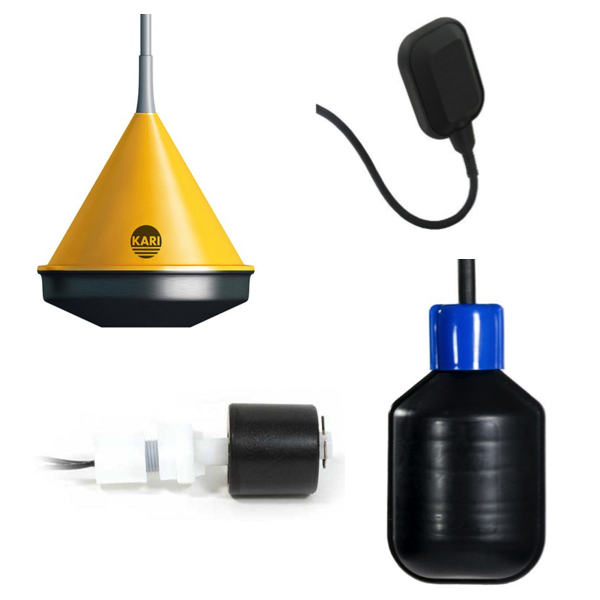Level Switches

Tanks often use level switches to monitor and maintain liquid levels, prevent overflows, and signal alarms when liquid levels reach critical points. For liquids, a float switch is a tried-and-true approach, moving up and down with the liquid to provide a simple, reliable signal. Yet, some industrial applications—especially those involving very large tanks or very high liquid level set points—use more advanced methods to provide a signal when the liquid level reaches a certain height. These methods tend to use electronics and don't involve moving parts. They are ideal in environments where vibration, high temperature, or corrosive materials would tend to make a reliable moving part an unreliable choice over time.
In contrast, we frequently employ liquid level switches in hazardous environments. They provide reliable level detection and monitoring control for bulk materials or process fluids in dangerous working conditions. Even in these risky situations, we can count on them. The switches connect electrically to our control systems. We can use them in remote situations and in automated systems. They are also a cheap solution to a sophisticated problem, and they work well with both conductive and non-conductive liquids and with bulk materials like powders or grains.
More Information about Level Switches
In industrial applications, it is essential to be able to monitor and control the levels of liquids and solids. Level switches perform this function. They detect the presence of a material at a certain point within a tank, silo, or other container, providing point-level detection for liquids and bulk solids. They are available in a variety of forms, such as float switches, tuning forks, and optical-level switches. Each type is suited to a different set of application requirements. Stainless steel is a common housing material in harsh environments, where it can offer the kind of durability and resistance to high temperatures and corrosive liquids that many applications require.
Versatile level switches withstand tough environmental conditions, including high pressure and extreme temperature. Their compact size allows them to fit almost anywhere, but it's their rugged construction that gives them the kind of long-term reliability and accuracy that really counts. Count these among the go-to devices for reliable level measurement and monitoring of just about any kind of process material in tanks, silos, or pipelines.
FAQs
Do point level switches and displacer level switches provide a cost effective and reliable performance for measuring fluid levels on a tank wall?
Yes, point level switches and displacer level switches provide cost-effective and reliable performance for measuring fluid levels on a tank wall, ensuring accurate level detection in various industrial applications.
Does a reed switch work in conductive liquid?
Yes, a reed switch can work in conductive liquids, as it is typically encased and activated magnetically, isolating it from direct contact with the liquid.
Which type of level switches are designed with a rotating paddle and an infrared LED light receiver?
Rotating paddle level switches are specifically designed for detecting bulk solids by using a rotating paddle to sense material presence, while optical level switches incorporate an infrared LED light receiver to detect liquid levels based on light reflection or absorption.

